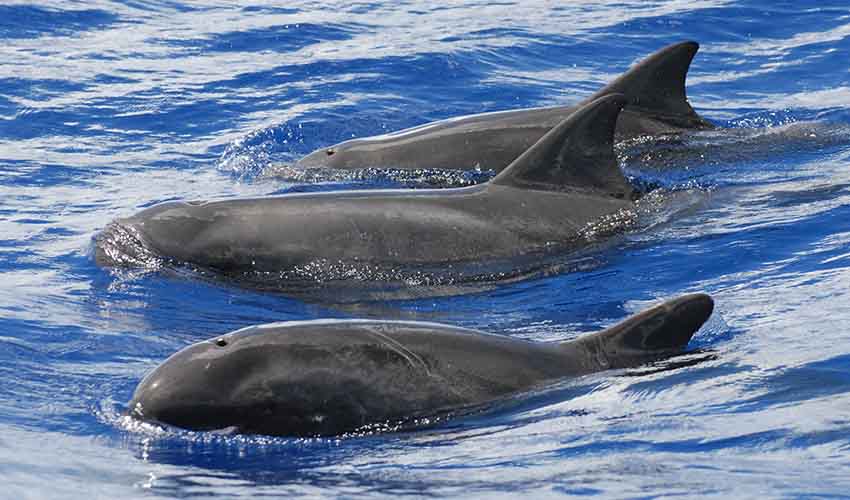Delphinidae – Oceanic dolphins
Captured the hearts and minds of humans for centuries, with bubbly personalities and intelligence challenging our own
These cetaceans are found in every ocean, from the frigid waters of the polar regions to the warm, tropical seas. Oceanic dolphins are known for their agility, playfulness, and remarkable cognitive abilities, setting them apart as highly evolved mammals within the aquatic realm.
Oceanic dolphins are profoundly social animals. They form tight-knit groups known as pods, which can number from a few individuals to several hundred. These pods are not merely aggregations of individuals; they represent complex social units with hierarchies, roles, and relationships. Within these groups, dolphins engage in cooperative behaviors such as hunting, working together to herd fish, or creating mud “nets” to trap prey. Such cooperative hunting strategies highlight their intelligence and the importance of social bonds in their survival.
Dolphins exhibit what can be described as culture, with behaviors and knowledge passed down from generation to generation. This cultural transmission includes hunting techniques, vocalizations, and social practices. The ability to teach and learn from one another is a testament to their cognitive complexity and underscores the role of social learning in their adaptation to diverse marine environments.
Oceanic dolphins demonstrate a capacity for empathy and unselfishness, caring for sick or injured pod members and assisting them in surfacing to breathe. Numerous accounts of dolphins saving humans from danger, such as protecting swimmers from shark attacks, showcase their awareness and concern for other species.
One of the most striking indications of dolphin intelligence is their self-awareness, demonstrated through their ability to recognize themselves in mirrors. This recognition of self is a trait shared with only a few other species, including humans, some apes, and certain birds. Additionally, dolphins have a sophisticated system of communication, utilizing a wide range of sounds, including clicks, whistles, and pulsed sounds. Each dolphin develops a unique signature whistle that functions similarly to a name, allowing them to identify and call to one another. Remarkably, dolphins can remember and recognize the signature whistles of other dolphins they have not encountered for decades, indicating a complex memory system and social awareness.
Genera in this family
Commonly they are known as the striped, spotted, and spinner dolphins
Not your ordonary dolphins
Some have black and white patches, making them look like little pandas of the sea!
Look for their most recognizable feature – a permanent grin formed by the curve of their mouth
Often described as having a “smiling” appearance due to their unique facial features
Inhabits both freshwater and marine environments
Often seen riding the bow waves of boats or performing acrobatic leaps out of the water
They are also called ‘killer whales’ for their ability to take down large animals, such as whales
One of the lesser-known members of the dolphin family, despite its dramatic name









